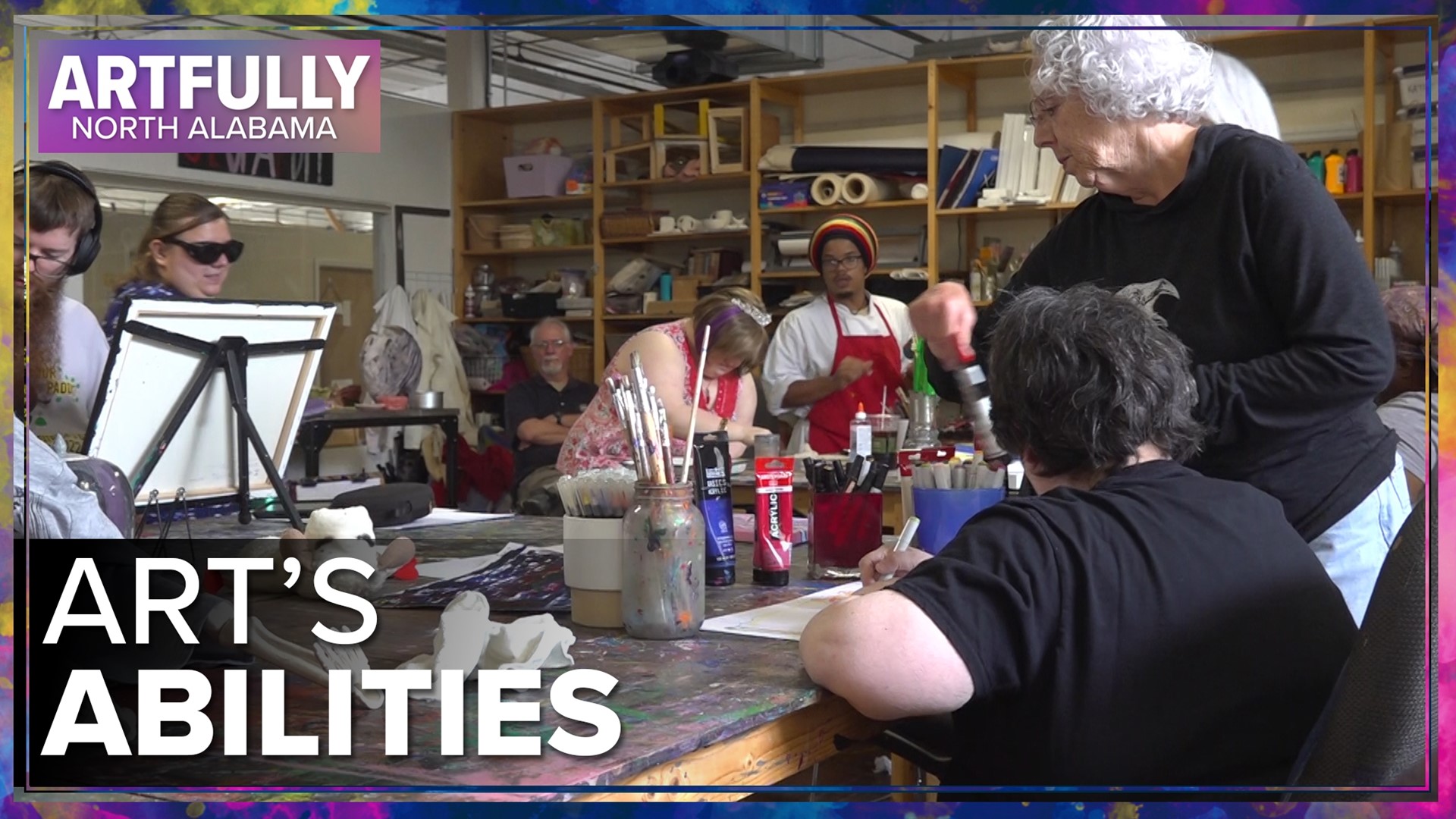HUNTSVILLE, Ala. — According to the CDC, adults with disabilities report experiencing frequent mental distress almost five times as often as adults without disabilities. I want to take you to a place where some adults with disabilities from a group home sees an art studio as therapy.
Nestled in the city of Huntsville is 8th Street Community, a group home, formally known as 305 Eighth Street. And although the name has changed, the mission hasn't. It's a place adults with mental disabilities can call home.
That's how Cydney Amos-Honaker, 8th Street Community Operations Director, describes it. "Having them live in our home we have a sense of pride, and a sense of belongingness, too. In our society, in our culture, it's hard for people to belong especially if you look different and act different."
Different includes having disabilities. Amos-Honaker has seen it herself. "When you think about the autistic population, they are smarter than the average person but yet they may have anxiety or depression because one part of their brain may not comprehend how to socialize."
Those disabilities can take a toll on one's mental health, but at Inside Out Studio at Lowe Mill, these students can turn those disabilities to ability, agility, and even therapy with the flick of a paintbrush.
Ian Roberts is a resident at 8th Street community and has joined Inside Out for a couple months. He says the studio, "It's like an atmosphere where I could be creative all the way through to the max. Yeah."
Deandra Garner has been at inside out for a couple of years and during the pandemic painted a special piece to get to talk about mental health awareness.
Maria Rivette is a long-time Inside Out artist...the longest, in fact. "You're talking to the very, very first ever accepted artist - Inside Out Studios; seven years ago." Like many others, Maria sees this studio as escapism. "The talking, the visiting, and the process of making art. It's kind of, it's a way of getting out of whatever's going on in your regular life."
These students converge from all walks of life to create art, and it doesn't stop with a paintbrush. Amos-Honaker says, "Having our residents able to go to these different places and be in the community makes them feel normal, makes them feel like just everyone else. Makes them feel like if their siblings are going to ballet class, or their sibling is going to art camp, they are able to do something similar."

